Sarah Sundin's Blog, page 421
July 25, 2013
Today in World War II History
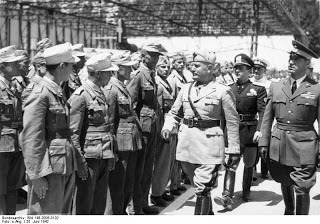 Benito Mussolini inspecting German troops, Sicily, Italy, 25 Jun 194270 Years Ago—July 25, 1943: In Italy, King Victor Emmanuel has Mussolini imprisoned and appoints Pietro Badoglio premier.
Benito Mussolini inspecting German troops, Sicily, Italy, 25 Jun 194270 Years Ago—July 25, 1943: In Italy, King Victor Emmanuel has Mussolini imprisoned and appoints Pietro Badoglio premier.
Published on July 25, 2013 01:00
July 24, 2013
Today in World War II History
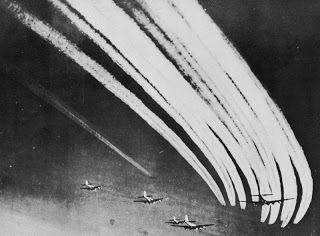 US Eighth Air Force B-17s leave contrails70 Years Ago—July 24, 1943: Allies begin “Blitz Week”—heavy bombing of German targets, as RAF bombs Hamburg and US Eighth Air Force bombs targets in Norway.
US Eighth Air Force B-17s leave contrails70 Years Ago—July 24, 1943: Allies begin “Blitz Week”—heavy bombing of German targets, as RAF bombs Hamburg and US Eighth Air Force bombs targets in Norway.
Published on July 24, 2013 01:00
July 23, 2013
Today in World War II History
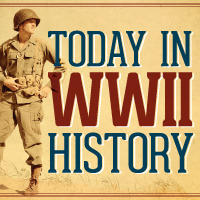 70 Years Ago—July 23, 1943: Field Marshal Erwin Rommel assumes command of German Army Group E in Greece to defend against suspected Allied invasion. First US naval air squadron to operate in the UK arrives in South Wales for antisubmarine duty over the Bay of Biscay.
70 Years Ago—July 23, 1943: Field Marshal Erwin Rommel assumes command of German Army Group E in Greece to defend against suspected Allied invasion. First US naval air squadron to operate in the UK arrives in South Wales for antisubmarine duty over the Bay of Biscay.
Published on July 23, 2013 01:00
July 22, 2013
Medical Air Evacuation in World War II
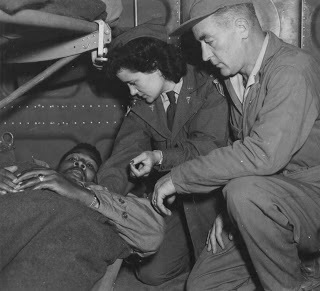 Air evacuation team from 803rd Medical Air Evacuation Transportation Squadron,
Air evacuation team from 803rd Medical Air Evacuation Transportation Squadron, Lt. Pauline Curry and Tech. Sgt. Lewis Marker,
check a patient on a flight over India. (U.S. Air Force photo)At the front of the plane, flight nurse Lt. Georgie Taylor threw a bright smile in place. These men had been wounded in battle or suffered from illness far from home. This could be their worst Christmas ever, but she was determined to give them pleasant memories. “All right, gentlemen. Open your presents.”The men untied the gauze, and Georgie and Sergeant Ramirez helped those with casts or bandages on their hands.“Fudge!” someone cried.“Hey, watch your language. A lady’s present.” (On Distant Shores, p. 294)
In my novel On Distant Shores, the heroine serves as a flight nurse. To celebrate the book’s release, I’m running a series on medical air evacuation in World War II.
Today I’ll discuss general principles of air evacuation, then we’ll follow one patient’s flight experience, and then we’ll meet the flight nurse.
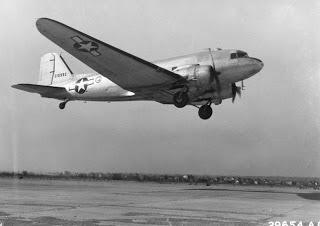 Douglas C-47 Skytrain cargo planeHistory of Air Evacuation
Douglas C-47 Skytrain cargo planeHistory of Air EvacuationAs soon as the Wright brothers took to the air, clever minds thought of ways to use the new contraption. In 1910 two Army officers constructed the first ambulance plane, and during World War I the Army experimented with transporting patients by air.
The advent of large multi-engine cargo planes in the interwar years made these dreams realistic. In November 1941, the US Army Air Force authorized the Medical Air Ambulance Squadron. Air evacuation was first performed informally early in 1942 during the construction of the Alcan Highway and in Burma and New Guinea. The first official air evacuation with flight nurses was flown on March 12, 1943 in Algeria.
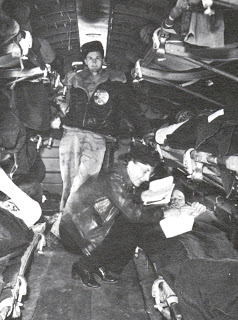 Lt. Aleda Lutz of 802nd Medical Air Evacuation Transport
Lt. Aleda Lutz of 802nd Medical Air Evacuation Transport Squadron in C-47 in North Africa. Lt. Lutz would
be killed in a plane crash in France Nov. 1, 1944,
one of 16 flight nurses killed in service.Advantages of Air Evacuation
Speed is the primary benefit of air evacuation. Planes can also traverse inhospitable terrain or dangerous seas. The military came to see that air evacuation required less equipment than ambulance transport, aided recovery, and increased morale on the front.
However, planes couldn’t fly in bad weather, and planes were not reserved for ambulance use during the war. Since top priorities for transport planes were airborne missions and carrying supplies, medical air evacuation depended on availability. Also, dangers existed from crashes and enemy attack. Since transports carried cargo and troops, they were not allowed to be marked with the Red Cross and were legitimate military targets. Fighter coverage was provided in some combat theaters.
Use of Air Evacuation in World War II
Thirty Medical Air Evacuation Transport Squadrons served in World War II in every combat theater. In all, 1,172,000 patients were transported by air. About half were ambulatory patients (the “walking wounded”) and half were litter patients. Only 46 patients died in flight, although several hundred died in crashes. By 1944, 18 percent of all Army casualties were evacuated by air.
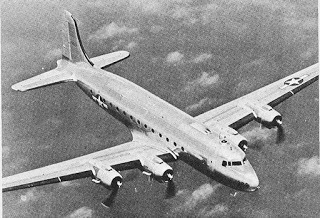 C-54 Skymaster transport planePlanes
C-54 Skymaster transport planePlanesThe C-47 was the workhorse of air evacuation. This dependable two-engine plane was used for shorter flights within a combat theater and could fly into forward landing strips close to the battlefield. A C-47 carried 18-24 patients, depending on how many were on litters.
For transoceanic flights, the four-engine C-54 Skymaster was used. The preferred load for a C-54 was 18 litter patients and 24 ambulatory. These flights carried patients from the combat theater stateside when the patient required 90-180 days of recovery or was eligible for medical discharge.
The C-46 Commando was used less frequently. Although it could carry 33 patients, the cargo door made loading difficult, and the plane had an unsavory habit of exploding when the cabin heater was used.
Medical air evacuation revolutionized the care of the wounded. Gen. Dwight Eisenhower credited air evacuation, sulfa drugs, penicillin, and the use of plasma and whole blood as key factors in the significant drop in the mortality rate among the wounded from World War I to World War II.
Resources:
Links, Mae Mills & Coleman, Hubert A. Medical Support of the Army Air Forces in World War II. Office of the Surgeon General, USAF. Washington, DC. 1955.
Futrell, Robert F. Development of Aeromedical Evacuation in the USAF: 1909-1960. USAF Historical Division, Research Studies Institute, Air University, 1960. Available free online at http://www.ibiblio.org/hyperwar/AAF/AAFHS/AAFHS-23.pdf
Published on July 22, 2013 02:00
Today in World War II History
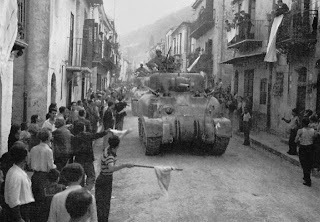 US 2nd Armored Division enters Palermo, Sicily70 Years Ago—July 22, 1943: US Seventh Army takes Palermo, Sicily without opposition. In Russia, Battle of Kursk ends after Hitler withdraws troops to reinforce Sicily.
US 2nd Armored Division enters Palermo, Sicily70 Years Ago—July 22, 1943: US Seventh Army takes Palermo, Sicily without opposition. In Russia, Battle of Kursk ends after Hitler withdraws troops to reinforce Sicily.
Published on July 22, 2013 01:00
July 21, 2013
Today in World War II History
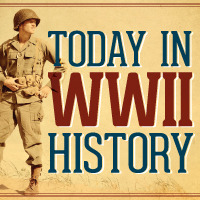 70 Years Ago—July 21, 1943: US destroyers Monaghanand Aylwin bombard Kiska in the Aleutians unopposed.
70 Years Ago—July 21, 1943: US destroyers Monaghanand Aylwin bombard Kiska in the Aleutians unopposed.
Published on July 21, 2013 01:00
July 20, 2013
Today in World War II History
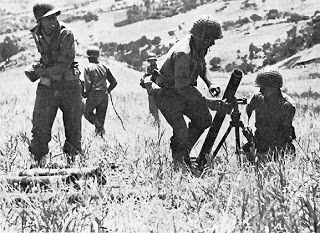 US mortar squad attacking San Stefano, Sicily70 Years Ago—July 20, 1943: As Americans drive north in Sicily toward Palermo, Italian forces surrender en masse. Soviets order all partisans in German-occupied Europe to attack rail lines.
US mortar squad attacking San Stefano, Sicily70 Years Ago—July 20, 1943: As Americans drive north in Sicily toward Palermo, Italian forces surrender en masse. Soviets order all partisans in German-occupied Europe to attack rail lines.
Published on July 20, 2013 01:00
July 19, 2013
Today in World War II History
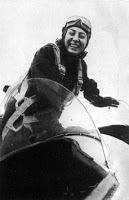 Yekaterina Budanova70 Years Ago—July 19, 1943: Soviet female ace Yekaterina Budanova (11 victories) shot down and killed over Luhansk, Russia. US bombs Rome for the first time: 500 bombers of the Twelfth Air Force strike Rome, 1500 killed on the ground.
Yekaterina Budanova70 Years Ago—July 19, 1943: Soviet female ace Yekaterina Budanova (11 victories) shot down and killed over Luhansk, Russia. US bombs Rome for the first time: 500 bombers of the Twelfth Air Force strike Rome, 1500 killed on the ground.
Published on July 19, 2013 01:00
July 18, 2013
Today in World War II History
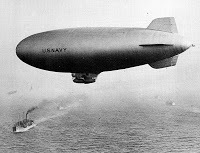 Navy airship over Allied convoy70 Years Ago—July 18, 1943: Only US blimp lost in action: off Florida, blimp K-74fires on German sub U-134, but is shot down.
Navy airship over Allied convoy70 Years Ago—July 18, 1943: Only US blimp lost in action: off Florida, blimp K-74fires on German sub U-134, but is shot down.
Published on July 18, 2013 01:00
July 17, 2013
Today in World War II History
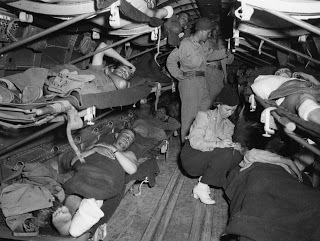 Lt. Katye Swope (802nd MAETS) checks patients being evacuated
Lt. Katye Swope (802nd MAETS) checks patients being evacuated from Sicily to Africa, July 1943.70 Years Ago—July 17, 1943: Off Bougainville in the Solomons, 200 US aircraft attack sink 7 Japanese ships and shoot down 49 Japanese planes. US 802nd Medical Air Evacuation Transport Squadron arrives at Ponte Olivo Airfield; air evacuation begins from Sicily. New song in Top Ten: “All or Nothing at All.”
Published on July 17, 2013 01:00



